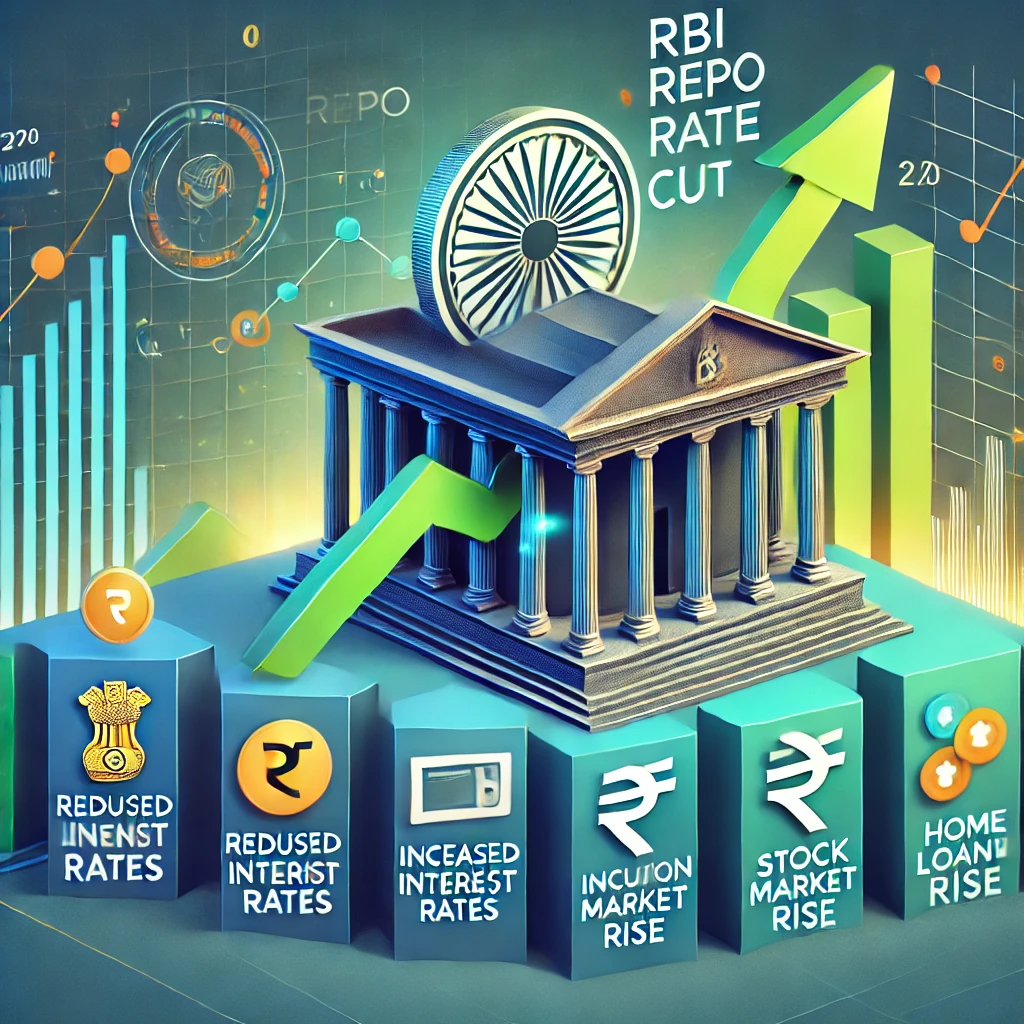The Reserve Bank of India (RBI) Governor has announced a repo rate cut, a crucial decision that influences the Indian economy, financial markets, and inflation rates. This move, part of RBI’s monetary policy, aims to boost economic growth while balancing inflation. For students preparing for competitive exams like UPSC, SSC, RBI Grade B, and banking exams, understanding the repo rate and its impact is essential. At SR Study, we break down the key aspects of this decision and highlight its constitutional significance.
RBI MPC Meeting February 2025
The Reserve Bank of India’s (RBI) six-member Monetary Policy Committee (MPC) on Friday cut the repo rate — the rate at which the RBI lends to other banks — by 25 basis points to 6.25 per cent. This is the first rate cut initiated by the RBI in five years, the last one being in May 2020.
The repo rate, till now, stood at 6.5 per cent. The move comes barely a week after the Centre cut personal income tax to boost consumption.
The RBI’s MPC, in a unanimous decision, lowered the repo rate in a bid to stimulate economic activity by making borrowing cheaper, thereby encouraging spending and investment. The MPC, however, decided to continue with its “neutral” stance for the economy, which RBI Governor Sanjay Malhotra explained would provide flexibility to respond to the evolving macroeconomic environment.
What is the Repo Rate?
The repo rate is the interest rate at which RBI lends money to commercial banks for short-term liquidity needs. A reduction in repo rate makes borrowing cheaper for banks, encouraging lending and investment in the economy.
Why Did the RBI Cut the Repo Rate?
Several economic factors have led to the RBI reducing the repo rate:
- Control Over Inflation: Lower inflation levels give the RBI flexibility to reduce interest rates.
- Boosting Economic Growth: India’s GDP growth has been slowing, and lower interest rates encourage businesses to expand.
- Global Economic Uncertainty: Due to geopolitical tensions and fluctuating markets, RBI aims to stabilize the economy.
- Increased Liquidity: Encouraging credit flow can stimulate housing, auto, and MSME sectors.
Impact of Repo Rate Cut on Different Sectors

- Banking Sector: Lower rates reduce borrowing costs, increasing loan approvals and investments.
- Real Estate Market: Home loan interest rates decrease, making housing more affordable.
- Stock Market: Investors react positively, leading to higher stock market performance.
- Consumers: Reduced EMIs on loans result in higher disposable income.
- Small Businesses & Startups: Easier access to credit fuels growth and expansion.
Constitutional and Legal Framework of RBI’s Monetary Policy
- The Reserve Bank of India Act, 1934, gives RBI the authority to regulate monetary policy.
- The Monetary Policy Committee (MPC), set up under the Finance Act, 2016, decides on repo rate changes.
- Article 246 of the Indian Constitution gives Parliament the power to legislate on banking regulations.
Key Takeaways for Competitive Exams
- Repo Rate Meaning & Importance 📌
- Impact of Monetary Policy on Inflation & Growth 📊
- RBI’s Role in Economic Stability 🏦
- Recent Economic Trends & Banking Sector Updates 💹
- Legal & Constitutional Provisions on RBI’s Powers ⚖️
Conclusion
The RBI’s repo rate cut is a strategic move to balance inflation control and economic growth. As future policymakers, bankers, and economists, students must grasp these concepts for both exams and practical applications. Stay connected with SR Study for expert insights, latest updates, and in-depth exam preparation.



